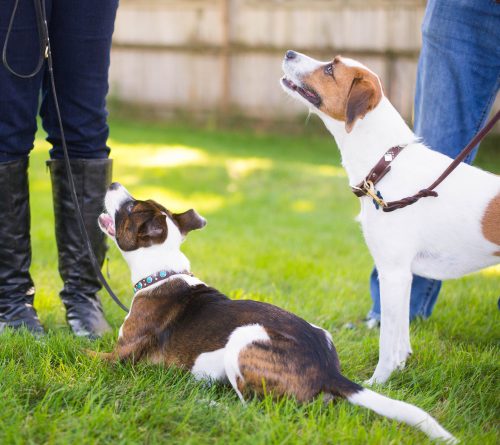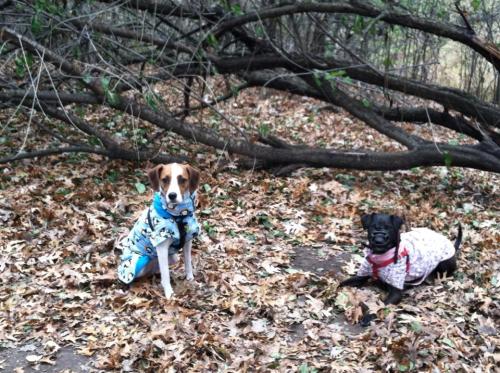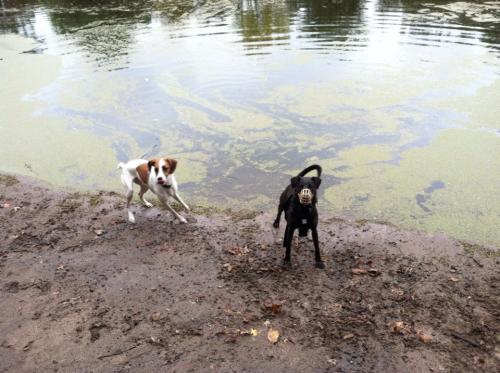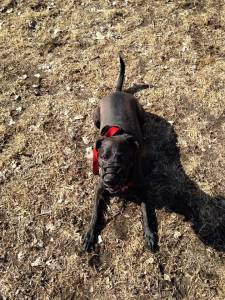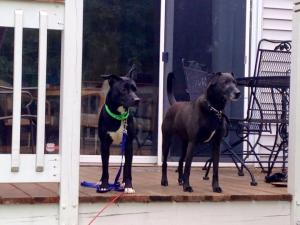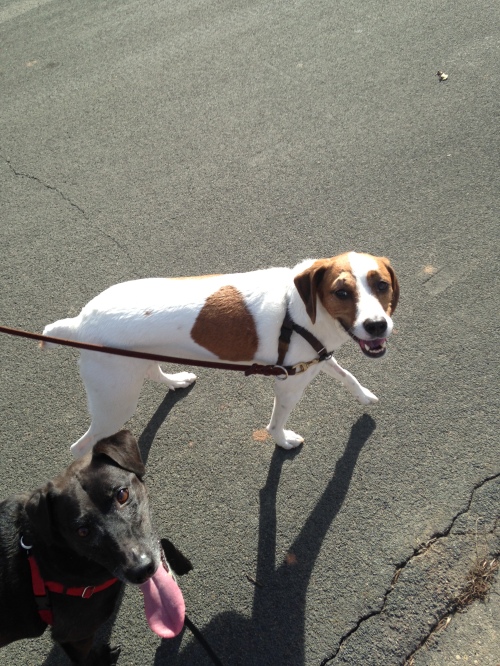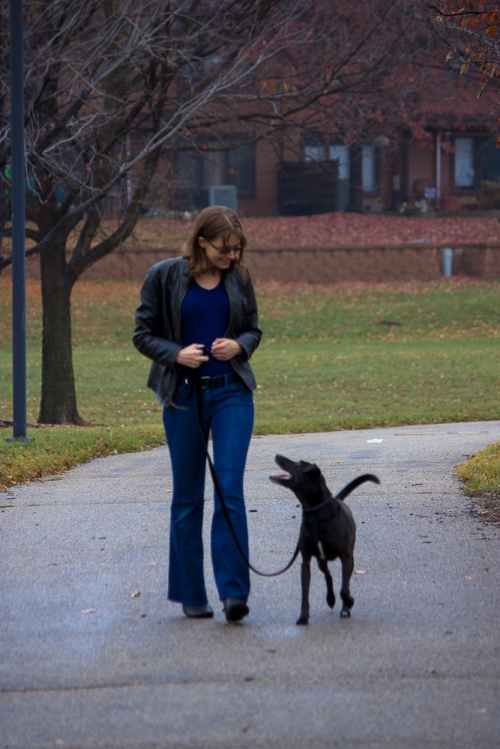Recently, my young dog, Pan, snarked at another young dog at a playgroup event. It was entirely my fault: I didn’t set Pan up for success. [It was also absolutely embarrassing, since I was wearing my Paws Abilities polo shirt (“seriously, she’s a dog trainer?”).]
Dog-dog relationships are one of my specialties, but I make mistakes too. As much as I’d like to be a superhero, I’m only human. My dogs, too, are not perfect. They’re only canine, and their social behaviors with other dogs are entirely normal and manageable.
We humans get into a lot of trouble with dog-dog relationships in our society. We expect our adult dogs to act like puppies forever, and we expect every dog to love every other dog. We judge and label dogs who display entirely normal, species-appropriate behaviors as “bad dogs” because they dared to growl or show teeth, and think that dogs who jump all over other dogs wildly are displaying entirely sweet and benign behaviors.
The truth is that dog tolerance levels are variable, and will change with both age and experiences (good or bad). There is also a genetic component to most dogs’ sociability with others of their own species, so all of the appropriate socialization in the world will not necessarily make every dog socially adept and friendly.
So, what does “normal” dog-dog behavior look like? Think of dog sociability as a bell-curve.
Dog Social: most puppies start here. They generally enjoy and seek out other dogs, and tolerate (or sometimes even encourage) rude behaviors from other dogs like humping or barking in their face. As dogs mature, almost all of them will move to the right of this trait. Truly Dog Social adult dogs (those who really appreciate the company of almost every other dog) are quite rare. Unfortunately for the species, this is the trait we expect all dogs to exhibit, even though it’s a fairly abnormal occurrence in the vast majority of mature dogs.
Dog Tolerant: slightly to the right of Dog Social dogs are those who are Dog Tolerant. Many puppies who will grow up to become Dog Selective or Dog Aggressive start here, before sliding to the right as they mature. This is also an incredibly common place for adult dogs to end up after maturity. Dog Tolerant dogs get along with most other dogs. They may be playful or neutral, but they generally have a pretty long fuse and good communication skills. Dog Tolerant dogs also tend to do well on leash around other dogs. They require normal supervision and limited direction from their human guardians.
Dog Selective: just as common as the Dog Tolerant adult is the Dog Selective one. While a rare and concerning trait in well-socialized puppies who have not had bad dog-dog experiences, this is a very normal place for an adult dog to end up at maturity. Dog selective dogs will often have a circle of “approved” dogs or types of dog that they do well with. Scuffles may break out quickly, and these dogs often have very short fuses. They may dislike certain play styles or types of dog on sight, and may be less than stellar on leash with other dogs. These dogs often dictate the rules while playing and may seem like the “fun police” or the “instigator” in group situations. They require a lot of supervision and positive direction from their owners to succeed with others of their species.
Dog Aggressive: this trait is highly abnormal in puppies, and fairly uncommon in adult dogs. In fact, it’s about as uncommon as truly Dog Social adult dogs. Dog Aggressive dogs often have a very limited circle of dog friends (perhaps only one or two housemate dogs), or may have no dog friends at all. They have quite poor social skills and can be quick to spark up on leash. Dog Aggressive dogs need additional support, patience, and direction from their guardians to succeed in dog-dog interactions.
So, where does Pan fall? As an eighteen-month-old intact male terrier cross, he’s matured into a very normal and manageable Dog Selective boy. He can be rude and pushy with other dogs, and is frequently inappropriate about intrusively sniffing or licking new dogs’ genitals if not redirected. He is also highly aroused by both meeting and playing with other dogs. He most enjoys interacting with opposite-sex partners under thirty pounds, but has dog friends of both genders and of various sizes. He does well with other dogs on leash when he is in “working mode” and generally handles on-leash greetings appropriately. Pan currently takes corrections from other dogs well if he meatballs into their space, but I suspect that he will become less willing to cede space as he continues to mature.
Dog sociability is not a fixed trait. As a dog matures, he or she will often quite naturally become less social and tolerant. There are many developmental changes that happen between sexual and social maturity, and most dogs will continue to display these changes until two to three years of age. Proper facilitation of dog-dog introductions and friendships can change your dog’s sociability for the better over time, and bad experiences can quickly make things worse. Good leadership and direction is important to set your dog up for success with their species.
As Pan’s handler, I failed to set him up for success when I allowed him to continue an aroused interaction with a male hound puppy who was larger than him. When the puppy jumped on and mouthed him too hard, he responded appropriately by correcting this behavior… then continued to go after the puppy [quite inappropriately!] until he was physically removed. Once on leash, he immediately calmed down and was able to focus on me, even with the puppy mere feet away. While this incident was over within seconds, it’s the sort of thing that, when allowed to happen repeatedly, will continue to shift Pan further towards the Dog Aggressive end of the spectrum. In fact, many of my clients could tell similar stories of how their dog initially enjoyed playgroups, the dog park, or doggy daycare, then became pickier and more likely to scuffle as adolescents, only to end up with a more serious incident as a young adult prompting them to call me.
Regardless of where your dog falls on the sociability spectrum, it’s your responsibility as their guardian to set them up for success. Remember that these traits are flexible, and that thoughtful management and slow introductions can shift your dog further to the left of the spectrum. Just as I have zero interest in frat parties, my adult terrier crosses are less than enthusiastic about the idea of a free-for-all play environment… and that’s entirely normal and okay.
Where does your dog fall on the sociability spectrum?

